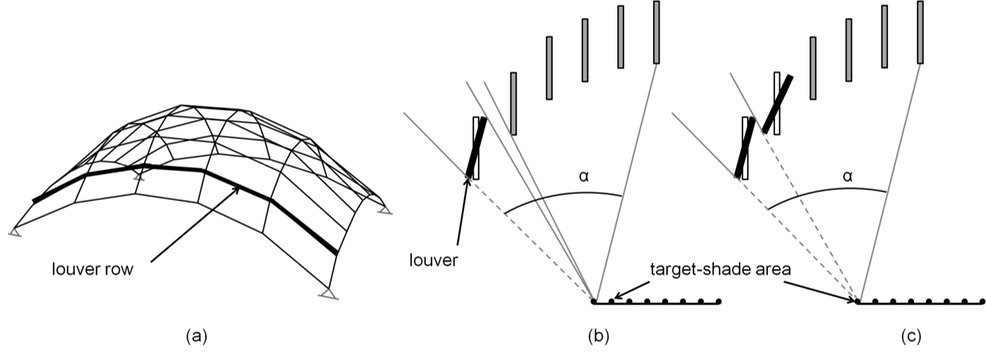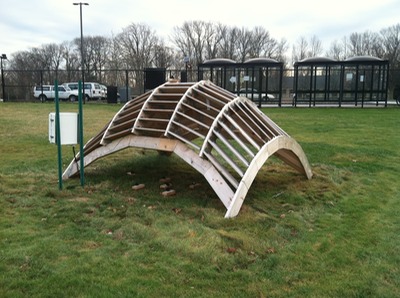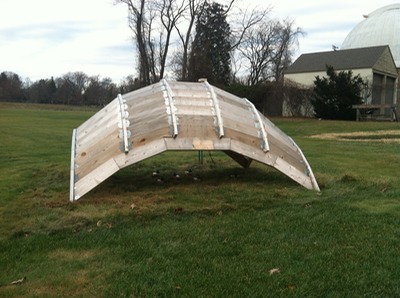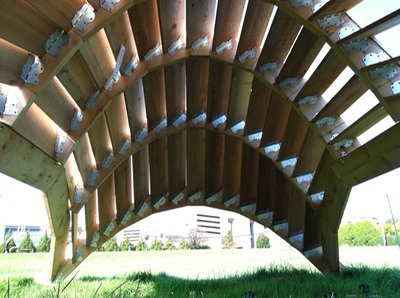To effectively shade the target-shade area, louver depth and cross-sectional orientation should create a continuous projection surface over the target-shade area. Given a louver depth that satisfies the structural design constraints, cross-sections are initially oriented vertically along the form found grid lines. This configuration is structurally optimal but not shading functional as harmful UV radiation can go through the openings between the louvers on to the target-shade area. The process can be performed on an entire louver row at a time (bolded in (a) below) facilitating construction as the entire louver row can be made out of planar sheet material. If desired, each louver can be individually adjusted. In (b) and (c) below, only solar vectors to one point on the target-shade area are shown, when in reality the process must be considered for a sufficient amount of points on the target-shade area to adequately approximate it. The first louver row is adjusted so that the first critical ray that reaches the target-shade area is blocked. This change in orientation is represented by an initial configuration (empty black louver outline) and a rotated configuration (solid black louver) in (b). The total angle range encompassed by all critical solar vectors is denoted α in (b) and (c). The second louver row is then adjusted to block all remaining rays between the first and second rows, only if they are within the global α range (see (c)). If there are critical rays between the two rows that are not blocked by adjusting the orientation of the second louver row, both the first and the second are re-adjusted. The process continues until all louvers rows are oriented, continuously ensuring that different louver rows will not intersect one another.




